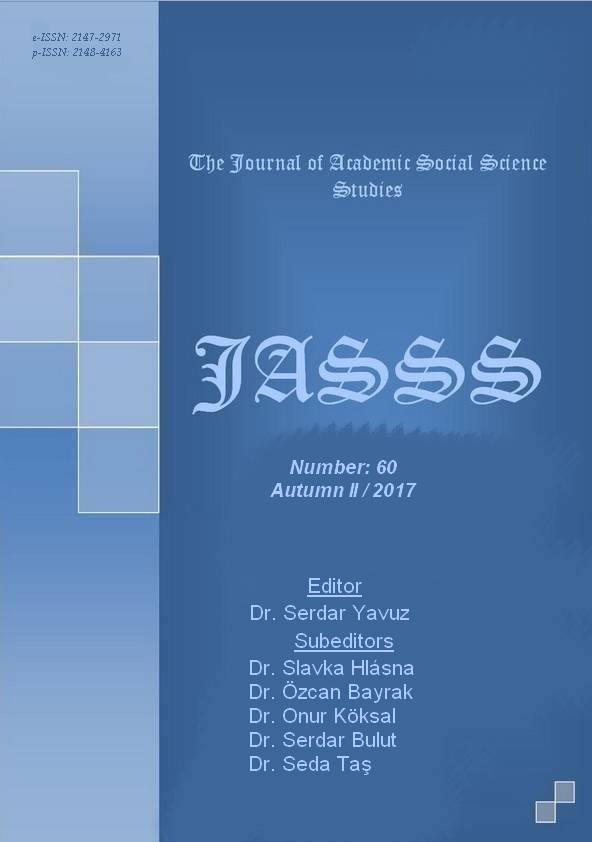Author :
Abstract
Bilgi ilerlemesinin “temelleri” ile ilgilenen bu çalışma, F. Danes’in “belirli-önceden-belirsiz” farklı işlevsel stillerinden tematik ilerleme türüne ek bir kaynak olarak “belirsiz-önce/belirli olmadan” modelinin uygulanabilirliğini inceler. Tartışmamız, “belirli-önce-belirsiz” bilgi ilerleme modelinin doğrusal bir ilişki olarak (“theme” ve “rheme” arasında), dilin farklı işlevsel kullanım biçimlerinde metinlerin organizasyonu için yeterli bir durum olmadığını öne sürmektedir. Buna ek olarak, bilgi “yapısı” iletişime amaç yönünden daha fazla bağlıdır ve bu nedenle, bir metnin uygun bir şekilde hedef odaklı olması için “belirli-önce-belirsiz” modelinin tüm kullanımlarının etkin metinler üretmediklerini, bu da dolayısıyla bizim tezimizin temelini oluşturur: “belirsiz-önce/belirli olmayan” modeli bağımsız bir zorunluluktur, yan ürün değildir ya da “belirli-önce-belirsiz” bilgi ilerlemesi modeline bir alternatiftir, zira tekst parçaları arasındaki işlevsel terimler arasındaki ilişkileri daha iyi yansıtır ve bir ilişkinin geçiş noktasını tanımlayarak ilgili ögelerin daha kapsamlı bir boyutunu “düzenler”. Bu makalede, “g-b-n” bilgi işleme tipinin merkezi kavramsal özellikleri incelenmiştir ve “n-b/w-g” modelinin mantıksal olarak açıklaması ve potansiyeli bu modelin değişen iletişim ihtiyaçlarına olan yeterliliğinin yanı sıra çeşitli işlevsel stillerde uygulanması ve deneysel olarak test edilmesiyle açıklanmaktadır. Farklı model türleri göz önüne alındığında, verilen bu model iletişimdeki sözdizimsel, anlamsal ve pragmatik unsurları da içine alarak iletişimin daha başarılı olmasına yöneliktir. Karşılaştırma temelli iki modelin bulguları ele alınırken sorunun perspektifine de dikkat çekilmektedir.
Keywords
Abstract
This study, concerned with the “basics” of information development, attempts to examine the applicability of the “new-before/without-given” (further “n-b/w-g”) pattern as an additional resource to F. Daneš’s “given-before-new” (“g-b-n” in furtherance) thematic progression type. Our controversy rests on the claim that “given-before-new” information development model as a linear relation (between “theme” and “rheme”) is not a sufficient condition for organization of texts in different functional styles of language-in-use. Moreover, information “packaging” more than often relies on the purposive aspect of communication and thereby we will query the contention that for a text to be appropriately goal-oriented, not all uses of “given-before-new” model produce effective texts, which, in turn, serves as a basis for our next assumption: “New-before/without-given” model is an independent requirement, not a by-product or an alternative of the “given-before-new” pattern of information development, since it better reflects the relations between text parts in functional terms, and identifying the transition point of a relation, “designs” a more relevant extent of the items related. In this article, the central conceptual properties of the “g-b-n” type of information processing is examined and it is illustrated that the rationale and potential of the “n-b/w-g” model by implementing it in various functional styles and by empirically testing its capacity as well as adequacy to varying communication needs. Comparison-based findings of the two models are addressed as well as the perspective of the problem is drawn attention to. Given the various models, this model aims a more successful communication involving syntactic, semantic and pragmatic elements.





